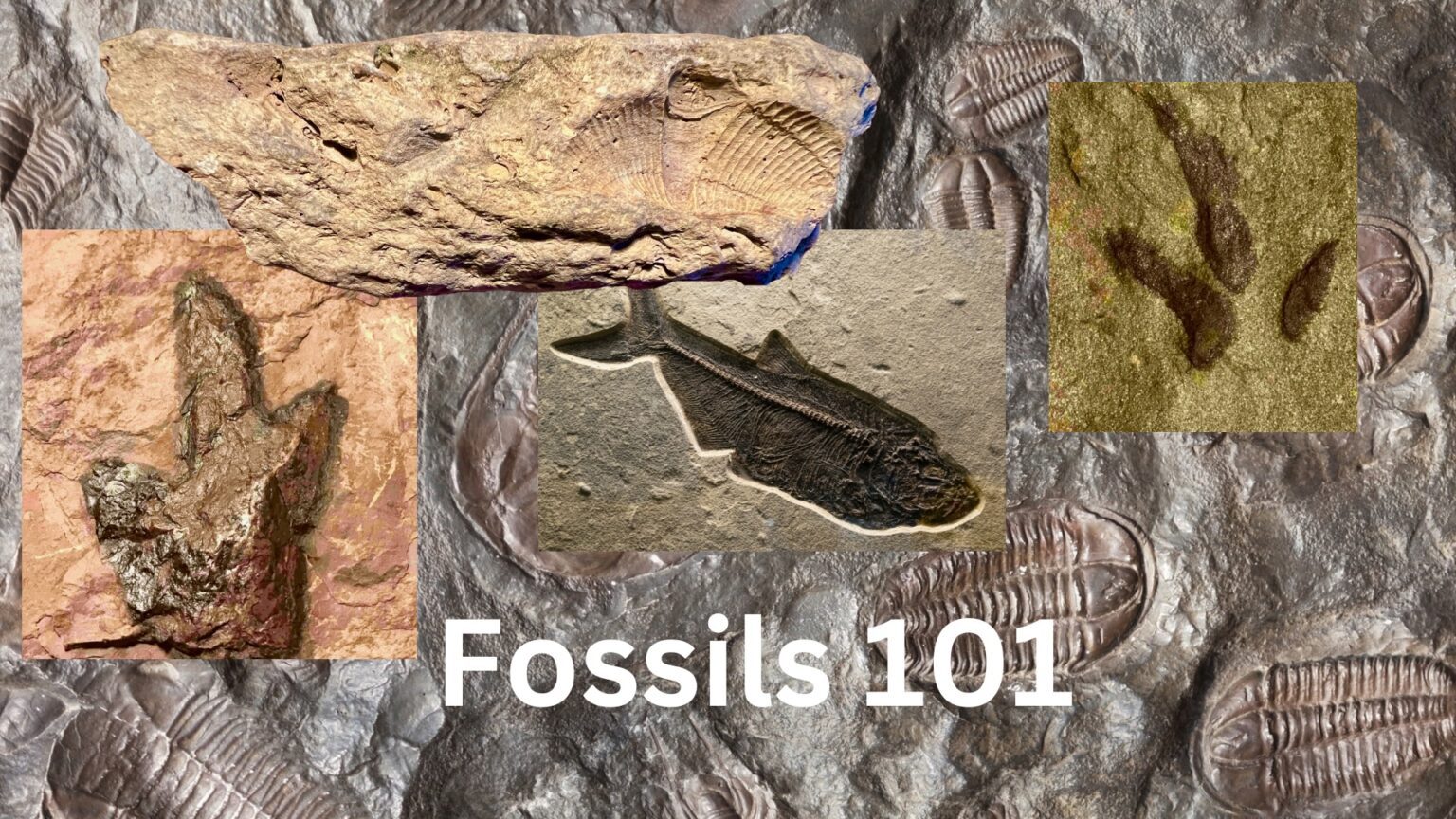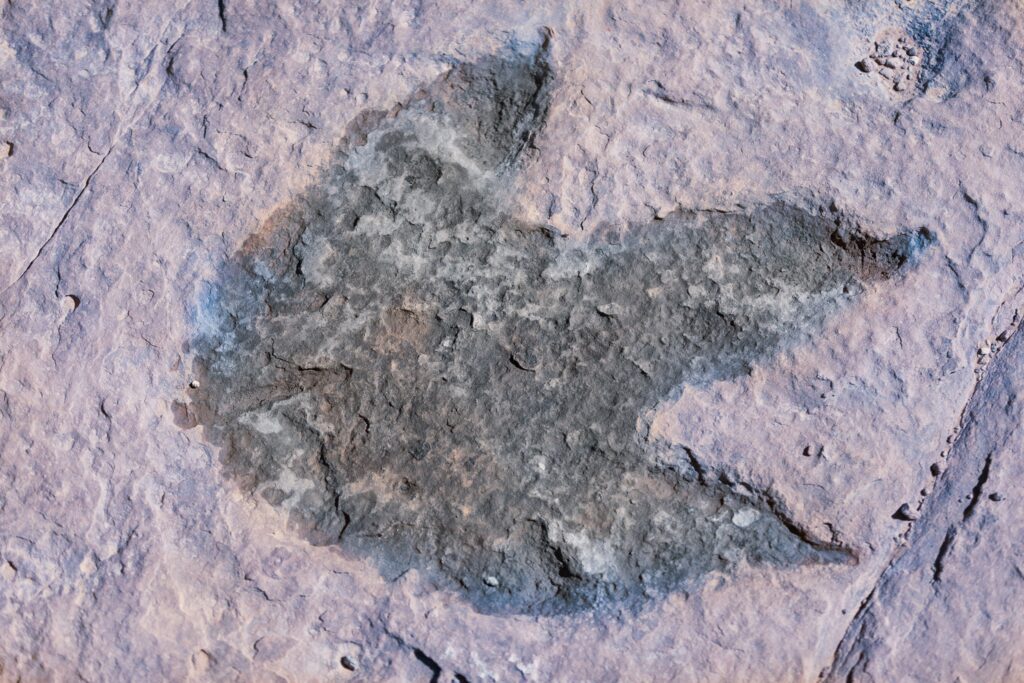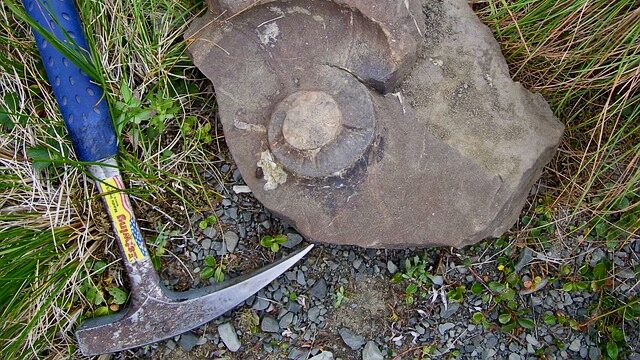
Fossils 101: Paleontology for Beginners
Fossils 101 is the study of fossils, known as paleontology, and offers an exciting journey into the Earth’s past. From the massive bones of some dinosaurs to the intricate imprints of ancient plants, fossils provide valuable clues about the history of life on this planet. Fossils provide evidence of creatures and plants, how they lived, and events that shaped the world we know.
Fossils are neat. So, don’t be intimidated by the words “study” and “research.” If this is a potential hobby, you can enjoy being outdoors and finding fossils.
In this introductory guide, we will look into the fascinating world of paleontology, exploring what fossils are, how they form, and the essential principles that guide paleontologists (with Ph.D.’s or self-declared) in unraveling the mysteries of life that came before us.
Fossils 101: How do fossils form?
Fossilization is a rare and intricate process that occurs under very specific conditions. The most common types of fossilization include:
- Mineralization: Minerals gradually replace the organic material of an organism, preserving its structure. This often happens in sedimentary rocks like shale or limestone.
- Molds and Casts: When an organism decays, it leaves behind an impression or mold in the sediment. If this mold is later filled with minerals or sediment, it forms a cast—a replica of the original organism. A mold can also be of the imprint of a dinosaur’s footprint left behind in
- Carbonization: In some cases, soft tissues decompose, leaving behind a thin residue of carbon. This carbon film provides a detailed imprint of the organism.
- Freezing: Organisms preserved in ice, like the Wooly Mammoths, can remain remarkably well-preserved for thousands of years.
Evidence suggests that fossilization occurred by a cataclysmic event that overcame living organisms and buried them in sediment. A cataclysmic event seems more likely than organisms becoming fossilized over a long period of time after a normal death.
Examples to support event-based fossilization include fossilized fish in the middle of eating another fish, fossils of mammals giving birth, and fossils of delicate leaves that deteriorate quickly if left exposed to air.
Additionally, fossil graveyards would seem to point to a massive death event and a gathering of the bodies by an overwhelming amount of water. This could be reconsidered if we can find evidence that dinosaurs, with death being predictable and imminent, made their way to a dinosaur pit to all die in the same place.
Understanding the conditions that lead to fossilization is crucial for paleontologists seeking to interpret the information preserved in these ancient remnants.
Visit our Places to Find Fossils Page to get started for yourself.

Principles of Paleontology
Paleontology is guided by several key principles that help scientists (or regular, curious folks) interpret the information gathered from fossils. Remember that guiding principles should be questioned and revised as new evidence is observed. We should all be open to adjusting conclusions based on new evidence and observations based on the scientific method.
- Law of Superposition: In undisturbed rock layers, the oldest fossils are found at the bottom, and younger fossils are found towards the top. They key with this law is the word undisturbed. Also, a possible explanation could be that the organisms that dwelled at the bottom, ended up at the bottom.
- Principle of Faunal Succession: Fossilized organisms follow a predictable sequence through time. By studying the fossil record, paleontologists can potentially establish the relative ages of rock layers assuming that a predictable sequence has occurred.
- Uniformitarianism: This principle suggests that the same natural processes observed today were at work in the past. By understanding contemporary geological processes, scientists can interpret ancient environments, or so the theory goes. Assuming the same processes today that were at work in the past would seem to ignore major events (e.g. volcanic explosions, floods, ice ages, etc.).
- Taphonomy: The study of what happens to an organism from the time of death until its discovery as a fossil. Understanding taphonomy helps paleontologists distinguish between biological and post-mortem processes that shape fossils.
Fossils 101: Tools of the Trade
Paleontologists use a variety of tools and techniques to uncover and study fossils. From simple brushes for delicate excavations to advanced imaging technology for detailed analysis, these tools aid in piecing together the puzzle of Earth’s history.
- Paleontological Hammers: Used for careful rock splitting and collecting samples.
- Brushes: Soft brushes help remove sediment without damaging fragile fossils.
- Geological Picks: Ideal for breaking through hard rock layers.
- 3D Scanning and Imaging: Modern technology allows for detailed scanning and analysis of fossils without physical contact, preserving delicate specimens. Ok, those of us who are self-declared Paleontologists will have to make do with numbers 1-3!

Conclusion
In paleontology, fossils serve as time capsules, offering glimpses into the diverse and ever-changing tapestry of life on Earth. As we continue to uncover new fossils and refine our understanding of the past, paleontology remains a dynamic field of discovery, constantly adding to our body of knowledge.
Whether you’re a seasoned enthusiast or a curious beginner, fossils provide a thrilling entry point into the captivating world of paleontology. So, grab your tools, explore the rocks, and embark on a journey through time with the remnants of Earth’s ancient inhabitants.
For additional information, visit the National Geographic.
